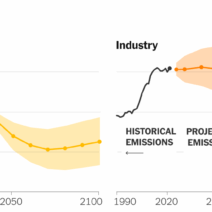Global warming is an issue that permeates every corner of our planet, influencing ecosystems, weather patterns, and the lives of billions. In Malaysia, a country known for its lush biodiversity and unique landscapes, local studies present alarming insights into the implications of rising temperatures and climatic shifts. This exposition delves into the ramifications of global warming in this Southeast Asian nation, highlighting observable changes, underlying causes, and the urgent need for action.
The dilemma of global warming in Malaysia manifests itself through a number of observable phenomena. Notably, erratic weather patterns have become increasingly commonplace. The monsoon seasons, which traditionally predictably drenched the country, now exhibit volatility. Climate scientists have noted that rainfall distribution is becoming irregular, with some regions experiencing unprecedented downpours while others find themselves in the throes of drought. This is not merely an anecdotal observation; it signifies a deeper malaise that challenges long-standing agricultural practices and water resource management strategies.
Moreover, the rising temperatures throughout the year raise concerns for Malaysia’s rich biodiversity. The country is home to numerous endemic species, many of which are already vulnerable. Studies indicate that shifting climatic conditions can disrupt migration patterns, reproduction cycles, and habitat ranges. For instance, the Malayan tiger, an iconic symbol of the nation’s wilderness, faces threatened habitats due to encroaching development and climate change alike. The cascading consequences of global warming threaten not just individual species, but entire ecosystems that depend on delicate balance.
A particularly haunting observation is the rising sea levels, which pose a significant risk to Malaysia’s coastal areas. As an archipelagic state with an extensive coastline, the vulnerability of districts like Penang, Selangor, and Johor becomes increasingly relevant. Communities living in these regions face the prospect of encroaching tides, which can lead to land loss, increased salinity in freshwater resources, and heightened storm surges. Additionally, local fishing industries, which contribute to the economy and food security, are at risk, with diminishing fish stocks linked to changing oceanic conditions.
The scientific community indicates that global warming in Malaysia is not merely a product of local environmental stressors but is intricately linked to global phenomena. Deforestation, a persistent issue in the region, exacerbates the effects of climate change. The rampant clearance of forests for agriculture and urbanization diminishes natural carbon sinks and contributes to a rise in greenhouse gas emissions. Furthermore, Malaysia’s role as a significant palm oil producer has implications not just for local ecosystems but for global carbon budgets. These socioeconomic factors intertwine, creating a complex matrix that challenges straightforward solutions.
Climate change also exacerbates socio-economic disparities within Malaysia. While urban areas may possess the infrastructure to adapt to changing conditions, many rural communities lack the resources necessary for resilience. For example, farmers dependent on consistent rainfall for rice cultivation face dire circumstances as unpredictability disrupts traditional agricultural cycles. In addition, indigenous communities rely on the natural resources of their land for cultural and subsistence purposes. With ecosystems changing, these groups face losses that are not merely economic but also cultural in nature.
The myriad effects of global warming in Malaysia compel a call to arms—urgent action is necessary. Initiatives aimed at reforestation, sustainable land management, and promotion of alternative energy sources are paramount. Notably, the promotion of sustainable palm oil production could transform global commodity markets while safeguarding local environments. Implementing regulations that prioritize biodiversity and carbon sequestration over short-term economic gains can turn the tide against this escalating predicament.
Public awareness and education also play a pivotal role in combating global warming. Citizens must be equipped with the knowledge to advocate for policies that prioritize environmental sustainability. Grassroots movements emerge as a vital force, encouraging responsible consumption, waste reduction, and eco-friendly practices. Collaboration between government agencies, non-profit organizations, and local communities can create synergetic effects that address environmental issues at multiple levels.
Research must continue to evolve, recognizing the complex interplay between climate change and human activity. Regional studies focus on adaptive strategies, resilience-building, and an understanding of local ecological footprints. Such research is essential to grasp how communities thrive or falter under the pressures of a changing climate. Insights gleaned from these inquiries can offer substantial guidance for policy formulation and implementation.
In conclusion, the specter of global warming looms large over Malaysia, revealing not only environmental challenges but also socio-economic inequities that require immediate redress. From altering weather patterns and rising sea levels to the threat posed against rich biodiversity, the implications of ongoing climate change should not be underestimated. The need for comprehensive studies, robust community engagement, and concerted action is clear. The fate of Malaysia and its inhabitants hinges upon a collective response that acknowledges the intricacies of global warming and approaches it with informed urgency. Each stride taken today shapes the legacy—for the environment, the economy, and future generations.






